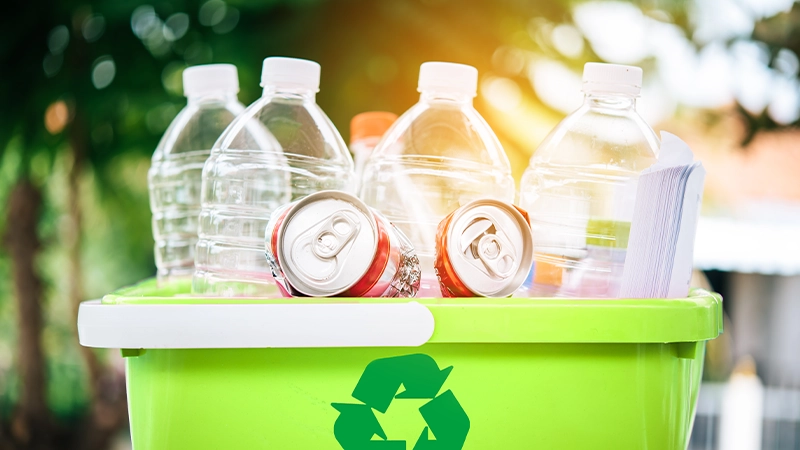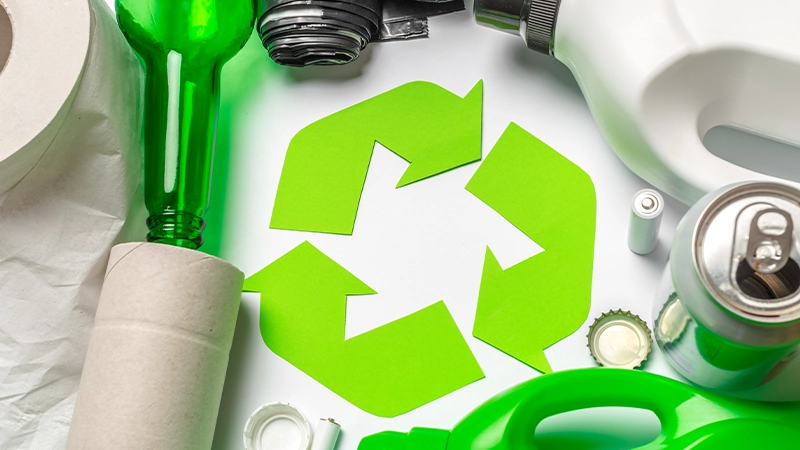The Contribution of Recycling to the Economy Today, the concepts of environmental awareness and sustainability are becoming more and more important. The contribution of recycling processes to both the environment and the economy is becoming an important fact. In this article on “The Contribution of Recycling to the Economy,” we will discuss the economic benefits of recycling in detail. We will also examine the impact of solid waste on the economy, the role of recycling facilities, and their contribution. Additionally, we will explore how recycling is done.
Table of Contents
- Contribution of Solid Waste to the National Economy
- Recycling Facilities
- Contribution of Recycling Facilities to the Economy
- How to Recycle
- Frequently Asked Questions
- Conclusion
Contribution of Solid Waste to the National Economy
Solid waste is one of the biggest environmental problems of modern society. However, when managed properly, it can make significant contributions to the national economy. Solid waste is collected. Processed in the recycling process, it reduces the need for raw materials. It also helps conserve natural resources and creates job opportunities.
Employment and New Business Lines
Recycling activities create employment in many different areas such as waste collection, sorting, processing and sales. This directly contributes positively to the economy.
Raw Material Savings and Cost Reduction
Solid waste can be recycled and used in the production of new products. This reduces the need to source raw materials from natural resources. Reduced dependence on raw materials lowers production costs. This enables products to be offered to the market at more competitive prices.

Recycling Facilities
Recycling facilities are places where waste is collected, sorted, processed and turned into raw materials. These facilities are the heart of the recycling process. Their contribution to the economy is high.
Structure and Functioning of Facilities
In recycling facilities, the collected waste is first sorted. The sorting process divides the waste into different categories such as plastic, glass, paper, and metal. It ensures that each material is transformed into value with the appropriate processing method. In this process, modern technologies are used to increase efficiency and improve product quality.
Technological Innovation and Modernization
Advanced technology in recycling plants makes the process more efficient. It also increases the recycling rate of waste. These technologies both save labor costs and increase throughput.

Contribution of Recycling Facilities to the Economy
Recycling facilities offer many economic advantages as well as creating jobs
Contribution to the Local Economy
Recycling plants contribute significantly to the local economy. They support the towns and cities around them. Facility operations stimulate the local supply chain through high volumes of raw material exchanges. They also drive energy consumption and logistics services. This helps local businesses to grow and create new job opportunities.
Export and Foreign Exchange Earnings
Recycled products and raw materials can be used in the domestic market. They can also be exported abroad. Thus, foreign exchange earnings are realized.
Environmental Savings and Economic Efficiency
Recycling facilities ensure the sustainable use of natural resources by protecting the environment. This makes a major contribution to the economy, especially in the long term. Reducing environmental pollution saves on health expenditures and increases productivity in sectors such as ecological balance, agriculture and tourism.
How to Recycle
Recycling is a process that can be applied at all levels, starting with individuals. There are also steps to be followed and methods to be known in order to recycle waste in the right way.
Recycling at Home
Recycling at home starts with the collection of waste in appropriate bins and delivery to recycling centers. In particular, materials such as plastic, glass, paper and metal should be collected separately and these materials should be taken to recycling points. In addition, taking care to keep the wastes clean while separating them facilitates the recycling process.
Recycling at Workplaces
Implementing recycling practices in workplaces also contributes to companies developing environmentally friendly policies. Double-sided printing of paper used in offices, recycling of plastic packaging and preparation of waste management plans are important in this context.
Steps of the Recycling Process
- Collection: Solid waste is collected through appropriate containers.
- Segregation: The collected waste is sorted into separate categories according to type.
- Processing: The sorted materials are processed into raw materials.
- Production: Processed raw materials are used in the production of new products.
- Marketing and Sales: Recycled products are offered to the market, completing the economic cycle.
Frequently Asked Questions
Recycling provides many economic benefits such as saving raw materials, creating new jobs, exporting and revitalizing the local economy.
Solid waste that is not recycled leads to rapid depletion of natural resources and increased waste management costs. This leads to economic losses and environmental problems in the long term.
Yes, recycling facilities can be highly profitable businesses with the right planning and management. They offer both environmental benefits and economic efficiency. Income is generated by creating local employment and by selling recycled products.
Recycling is the collection, sorting, processing and recycling of materials such as plastics, glass, paper and metal into new raw materials. There are specific methods and facilities for each type of material.
Bireyler, evlerinde atıkları doğru şekilde ayırarak, geri dönüşüm kutularını kullanarak, geri dönüşüm merkezlerine atıkları götürerek ve geri dönüşüm bilincini çevreleriyle paylaşarak bu sürece katkıda bulunabilirler.
Conclusion
The contribution of recycling to the economy is not limited to monetary savings or material reuse. It also promotes energy efficiency, reduces environmental degradation, and supports the development of green industries. Effective recycling requires the collaboration of municipalities, businesses, and citizens. Each plays a distinct role in waste separation, recovery, and transformation. Proper solid waste management and the efficient operation of recycling plants are indispensable for maintaining this cycle. When individuals adopt recycling as a daily habit, it creates long-term benefits for both the environment and the economy.
Moreover, it leads to job creation, raw material conservation, and reduced landfill usage. For recycling systems to work optimally, awareness must be raised across all sectors of society. Educational programs, incentive mechanisms, and sustainable policies should be implemented to support this goal. Recycling is not merely a waste management solution. It is a strategic pillar of sustainable development. As the world faces growing ecological and economic challenges, recycling plays a more critical role than ever. The Contribution of Recycling to the Economy becomes increasingly vital and irreplaceable.
If you want to review our other articles, you can browse our blog page.

